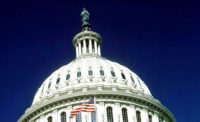Heart disease will cost U.S. $1 trillion by 2035
American Heart Association warns of “crushing”economic burden

A new studyby the American Heart Association (AHA) projects that if left unchecked, by 2035 cardiovascular disease (CVD) will affect 131.2 million Americans -- 45 percent of the total U.S. population – and place a crushing burden on the nation’s financial and health care systems, with a cost of $1.1 trillion.
“Our lawmakers should pay close attention to these projections as they deliberate changes to the Affordable Care Act (ACA) and the health care system,” said AHA President Steven Houser, Ph.D., FAHA. “If we are to avert this looming crisis, we must maintain access to health care coverage by protecting the ban on pre-existing conditions and enabling everyone to take advantage of an important weapon against CVD – prevention. Most importantly, we must invest more funding from the National Institutes of Health in heart and stroke research so we can give Americans the treatments and cures they will desperately need in the coming years.”
The new projections are an update of those made by the association in 2011 that estimated around 100 million Americans would suffer from CVD by 2030. Unfortunately, that predication came true in 2015 – almost 15 years sooner than anticipated. That same year, the death rate from heart disease rose by 1 percent for the first time since 1969. This latest study projects that by 2035, there will be:
- 123.2 million Americans with high blood pressure
- 24 million coronary heart disease patients
- 11.2 million suffering from stroke
- 7.2 million Americans with atrial fibrillation
Some other key findings:
- By age 45, your CVD risk is 50 percent, at 65 it jumps to 80 percent
- Black Americans will have the highest rates of CVD by 2035, followed by Hispanics
- Men will suffer from CVD at a greater rate than women between now and 2035
CVD is currently the costliest disease in our nation, with a price tag of $555 billion in 2016. Two decades from now, CVD costs across all conditions are projected to more than triple among those age 80+ and more than double among those ages 65-79.
The report breaks out the total cost into direct and indirect costs. Direct medical costs related to CVD will continue to rise, with costs expected to triple over the next 20 years for Hispanics, more than double among Blacks and be higher for women than men. In addition, expenses associated with CVD are expected to surpass medical cost estimates for other chronic diseases, such as diabetes and Alzheimer’s. Indirect costs due to CVD, or the costs related to lost productivity in the workplace and at home, are projected to be the highest for individuals age 45-64. On average, an employee with CVD costs his or her employer nearly 60 hours and over $1,100 more in lost productivity per year than an employee without CVD. While white Americans face the highest indirect costs, the report stresses that Hispanics are expected to experience the largest relative increase in costs due to CVD over the next 20 years.
To address the escalating burden highlighted in this report, the association recommends the following specific changes in federal policies:
- Increased funding for heart and stroke research by the National Institutes of Health
- Enhanced focus on prevention to improve and preserve population health from birth to old age
- Preservation and expansion of access to high-quality affordable health care
Even though heart disease and stroke account for 23 percent and 4 percent of all deaths respectively, the NIH invests a meager 4 percent of its budget on heart disease research, a mere 1 percent on stroke research and only 2 percent on other CVD research. The association believes robust NIH-funded research is our best hope to turn these projections around.
As the report notes, stroke and heart failure account for the most spending in the Medicare fee-for-service program. This scenario reflects how our health care system rewards efforts that treat disease rather than those that prevent them. Prevention programs under the Affordable Care Act have enabled insured patients to obtain blood pressure and cholesterol screenings, smoking cessation services, behavioral counseling for obesity, as well as improved access to primary care and medications needed to help manage their diseases and reduce their risks. Retaining this emphasis on prevention and investments in it will be key to reducing health care costs moving forward.
Finally, protections for patients with pre-existing conditions are vitally important for Americans who have or will develop cardiovascular disease. It is estimated that more than 50 percent of adults under age 65 have conditions that would have precluded them from health insurance coverage under the pre-existing condition and medical underwriting rules that existed in most states before the Affordable Care Act. The association urges Congress to maintain the ban on pre-existing condition exclusions as they consider changes to the ACA. These protections will continue to be critical for Americans with heart disease or stroke now and in future years.
“While we have made tremendous progress in fighting cardiovascular disease, recently reported death rates and these projections reinforce that now is not the time to relax,” warned Houser. “We must continue to be vigilant, because if these projections become reality, a serious health and economic crisis is on the horizon. The association welcomes the opportunity to work with Congress and the new administration to find ways to wipe out the burden of CVD and build an improved culture of health in our country.”
Cardiovascular Disease: A Costly Burden for America was based on research conducted for the association by RTI International, an independent, nonprofit research institute.
Looking for a reprint of this article?
From high-res PDFs to custom plaques, order your copy today!





